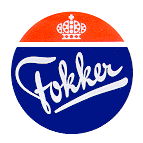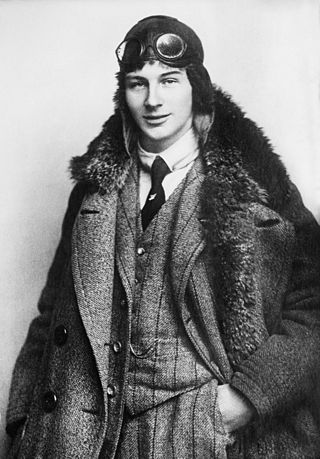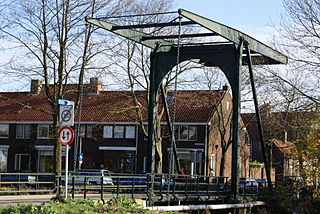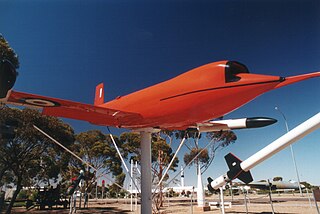
Airspeed Limited was established in 1931 to build aeroplanes in York, England, by A. H. Tiltman and Nevil Shute Norway. The other directors were A. E. Hewitt, Lord Grimthorpe and Alan Cobham. Amy Johnson was also one of the initial subscribers for shares.

Fokker, was a Dutch aircraft manufacturer that operated from 1912 to 1996. The company was founded by the Dutch aviator Anthony Fokker and became famous during World War I for its fighter aircraft. During its most successful period in the 1920s and 1930s, Fokker dominated the civil aviation market. The company's fortunes declined over the course of the late 20th century. It declared bankruptcy in 1996, and its operations were sold to competitors.

Anton Herman Gerard "Anthony" Fokker was a Dutch aviation pioneer, aviation entrepreneur, aircraft designer, and aircraft manufacturer. He produced fighter aircraft in Germany during the First World War such as the Eindecker monoplanes, the Dr.1 triplane and the D.VII biplane.

DASA was a German aerospace manufacturer.

Papendrecht is a town and municipality in the western Netherlands, in the province of South Holland, at the crossing of the River Beneden Merwede and the Noord River. The municipality had a population of 32,171 in 2021 and covers an area of 10.79 km2 (4.17 sq mi) of which 1.38 km2 (0.53 sq mi) is water.

The Fokker D.VII was a German World War I fighter aircraft designed by Reinhold Platz of the Fokker-Flugzeugwerke. Germany produced around 3,300 D.VII aircraft in the second half of 1918. In service with the Luftstreitkräfte, the D.VII quickly proved itself to be a formidable aircraft. The Armistice ending the war specifically required, as the fourth clause of the "Clauses Relating to the Western Front", that Germany was required to surrender all D.VIIs to the Allies. Surviving aircraft saw much service with many countries in the years after World War I.

The Fokker F28 Fellowship is a twin-engined, short-range jet airliner designed and built by Dutch aircraft manufacturer Fokker.

The Fokker 100 is a regional jet that was produced by Fokker in the Netherlands. The Fokker 100 was based on the Fokker F28 with a fuselage stretched by 18.8 ft (5.7 m) to seat up to 109 passengers, up from 85. It is powered by two newer Rolls-Royce Tay turbofans, and it has an updated glass cockpit and a wider wing and tail for increased maximum weights.

The Dornier Do 24 is a 1930s German three-engine flying boat designed by the Dornier Flugzeugwerke for maritime patrol and search and rescue. A total of 279 were built among several factories from 1937 to 1945.

The Fokker 50 is a turboprop-powered airliner manufactured and supported by Dutch aircraft manufacturer Fokker. It was designed as an improved version of the successful Fokker F27 Friendship. The Fokker 60 is a stretched freighter version of the Fokker 50.

The Fokker S.14 Machtrainer is a two-seater military training jet aircraft designed and manufactured by the Dutch aircraft manufacturer Fokker for the Royal Netherlands Air Force (RNLAF). It has the distinction of being one of the first dedicated jet-powered training aircraft to be produced in the world. The unarmed trainer served with Dutch Air Force for 12 years, and one prototype was used by the Dutch Aerospace labs for 6. Two were lost in air crashes, one in 1955 and a second in 1964. The Machtrainer features side-by-side seating with a single engine, although an under-belly gun pod and hardpoints were designed but not put into use.

The Fokker F26 was an early jet airliner design created by the Dutch aircraft manufacturer, Fokker.

The GAF Jindivik is a radio-controlled target drone produced by the Australian Government Aircraft Factories (GAF). The name is from an Aboriginal Australian word meaning "the hunted one". Two manually-controlled prototypes, were built as the GAF Pika as a proof of concept to test the aerodynamics, engine and radio control systems, serialled A92-1/2, 'B-1/2'. The radio-controlled Jindivik was initially designated the Project B and received serials in the A93 series. Pika is an Aboriginal Australian word meaning flier.

Atlantic Aircraft Corporation, also known as Fokker-America and Atlantic-Fokker, was a US subsidiary of the Dutch Fokker company, responsible for sales and information about Fokker imports, and eventually constructing various Fokker designs.

The NHI H-3 Kolibrie was a small helicopter developed in the Netherlands in the 1950s by Nederlandse Helikopter Industrie. It first flew in May 1956.

The Fokker F.III was a single-engined high-winged monoplane aircraft produced in the 1920s by the Dutch aircraft manufacturer Fokker. It could carry five passengers. The aircraft was also built under licence in Germany as the Fokker-Grulich F.III.

The Fokker F.XII was a three-engined high-winged monoplane airliner produced in the 1930s by the Dutch aircraft manufacturer Fokker. Two aircraft were built under license by Danish Orlogsværftet. The first was powered by 347 kW (465 hp) Bristol Jupiter VI radial engines and the second, an improved model, the F.XIIM, was about 20 km/h (12 mph) faster than the Dutch-built F.XIIs.

Fokker Technologies is a Dutch aerospace company owned by British aerospace supplier GKN. The company has production companies which design, develop and produce structures, landing gear and electrical systems for the aerospace and defense industry. Additional to the production capabilities, it also supplies integrated maintenance services to aircraft owners and operators.

The PTV-N-2 Gorgon IV was a subsonic ramjet-powered missile developed by the Glenn L. Martin Company for the United States Navy. Originally intended as an air-to-surface weapon, it materialized as a propulsion test vehicle, and between 1947 and 1950 was used for test purposes and, as the KDM Plover, as a target drone.
The Aviolanda AT-21 was a target drone developed in the Netherlands by Aviolanda. Powered by a pulsejet engine, it was the Netherlands' first drone to be successfully developed, and saw limited use in the late 1950s and early 1960s.



















